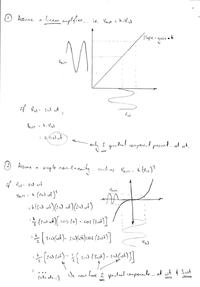Nischitha
Junior Member level 1

Hi,
As we know when there is a nonlinear load, the current drawn by the the load is discontinous and it doesnot corresponds to the applied voltage waveform.
But how does this discontinous current or non linearity generate harmonics?
As we know when there is a nonlinear load, the current drawn by the the load is discontinous and it doesnot corresponds to the applied voltage waveform.
But how does this discontinous current or non linearity generate harmonics?



